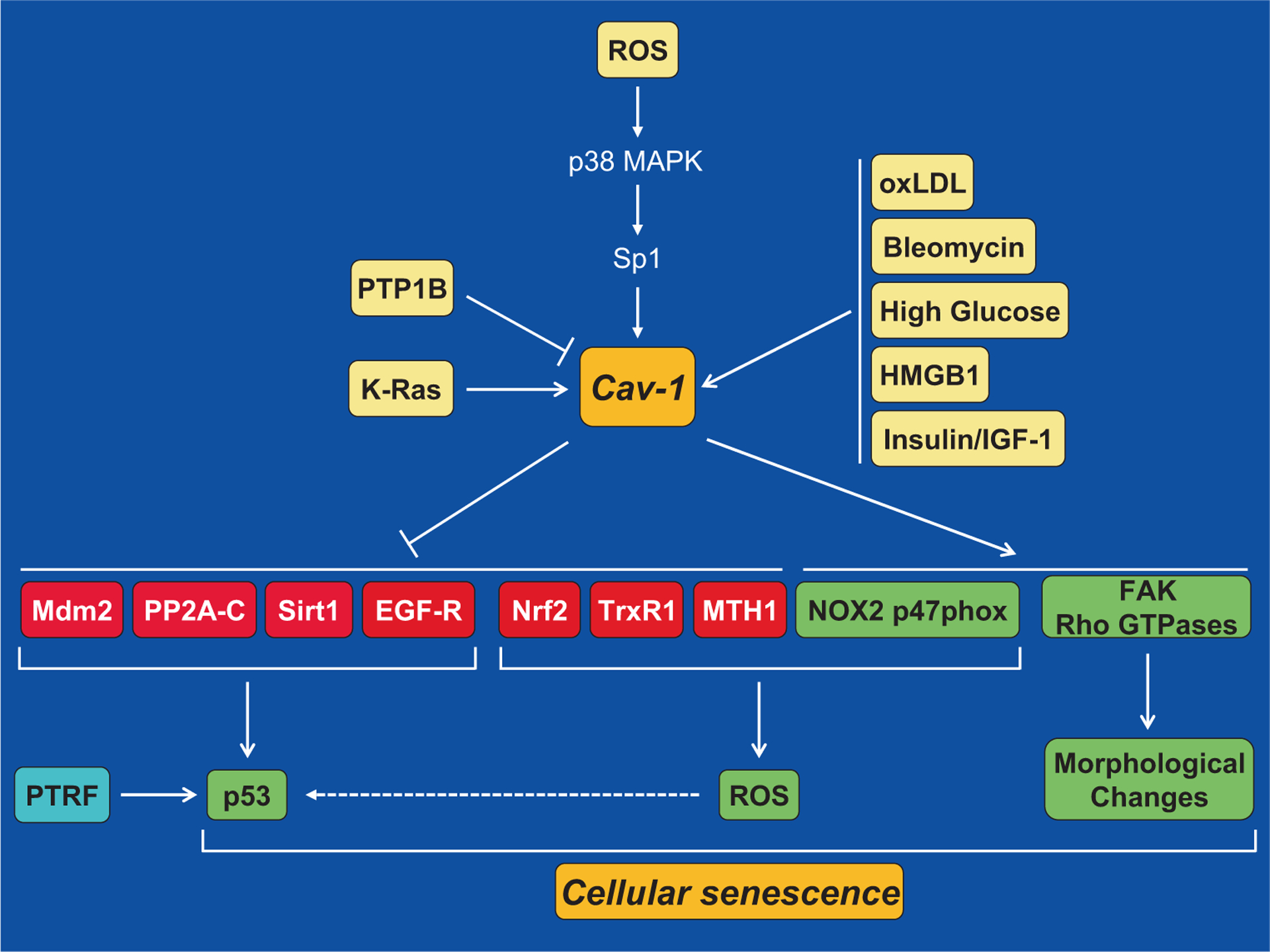Fig. 1.

Molecular mechanisms underlying caveolin-1-mediated cellular senescence. Oxidative stress activates the caveolin-1 gene promoter in a p38 MAPK-Sp1-dependent mechanism and upregulates caveolin-1 expression. Oncogenic K-Ras, oxLDL, bleomycin, high levels of glucose, HMGB1, the insulin/IGF-1 pathway, and downregulation of PTP1B induce senescence through caveolin-1-mediated signaling. Upregulation of caveolin-1 promotes cellular senescence by activating the p53/p21Waf1/Cip1 pathway. Activation of p53 occurs through multiple mechanisms: (1) sequestration of Mdm2 into caveolar membranes, away from p53, prevents the Mdm2-dependent degradation of p53, which stabilizes p53 expression; (2) sequestration of PP2A-C into caveolar membranes activates ATM, which in turns phosphorylates and activates p53; (3) the interaction of caveolin-1 with Sirt1 inhibits Sirt1 activity leading to increased acetylation/activation of p53; (4) inhibition of EGF-R by caveolin-1 has been linked to activation of p53; (5) inhibition of Nrf2, TrxR1, and MTH1, through direct interaction with caveolin-1, and activation of NOX2 p47phox activate p53 through ROS production. PTRF can also promote senescence through activation of p53. Finally, activation of FAK and Rho GTPases by caveolin-1 promotes morphological changes that are typical of senescent cells
